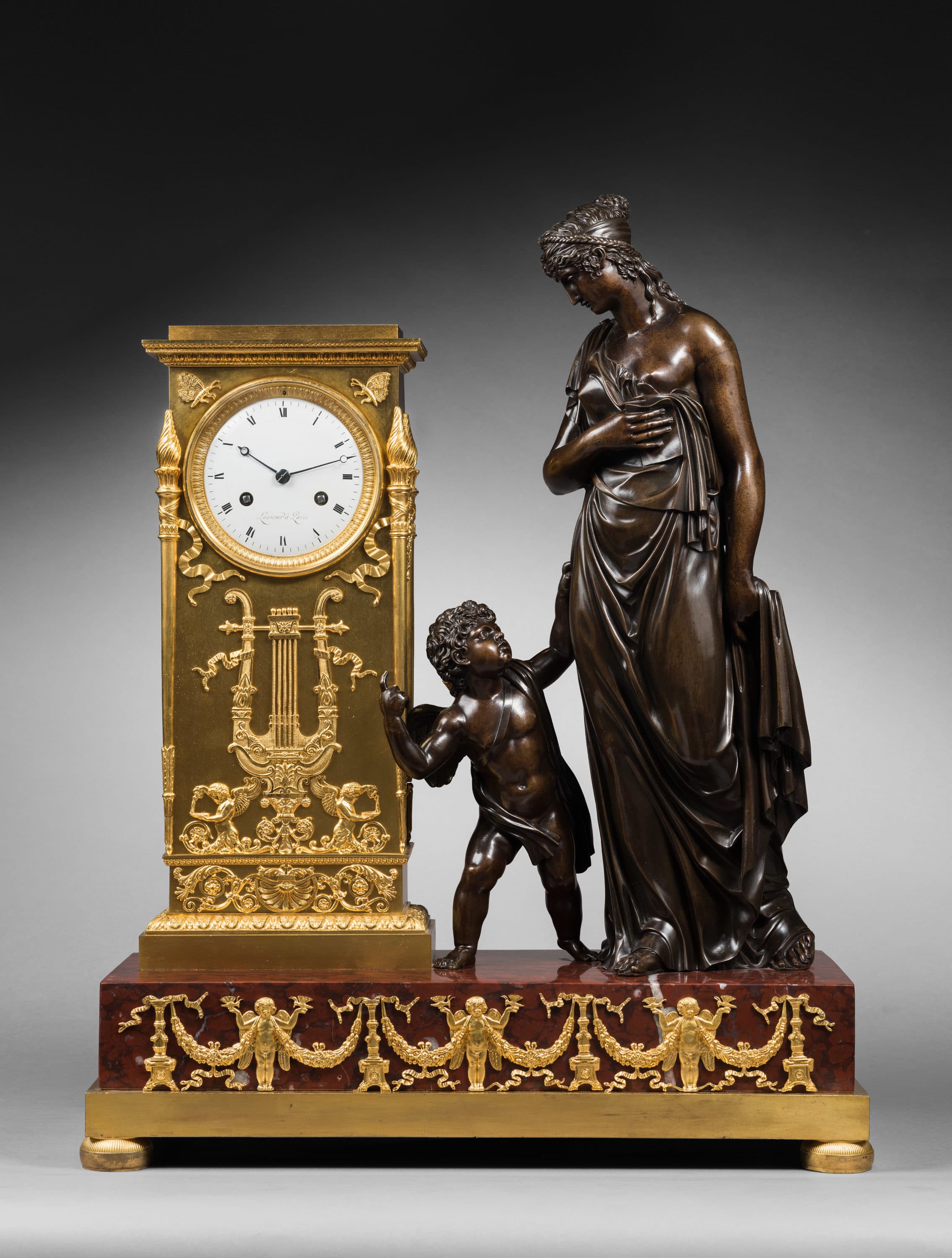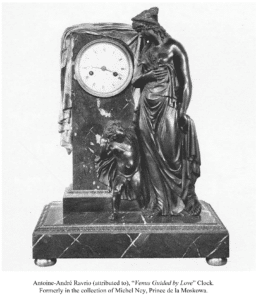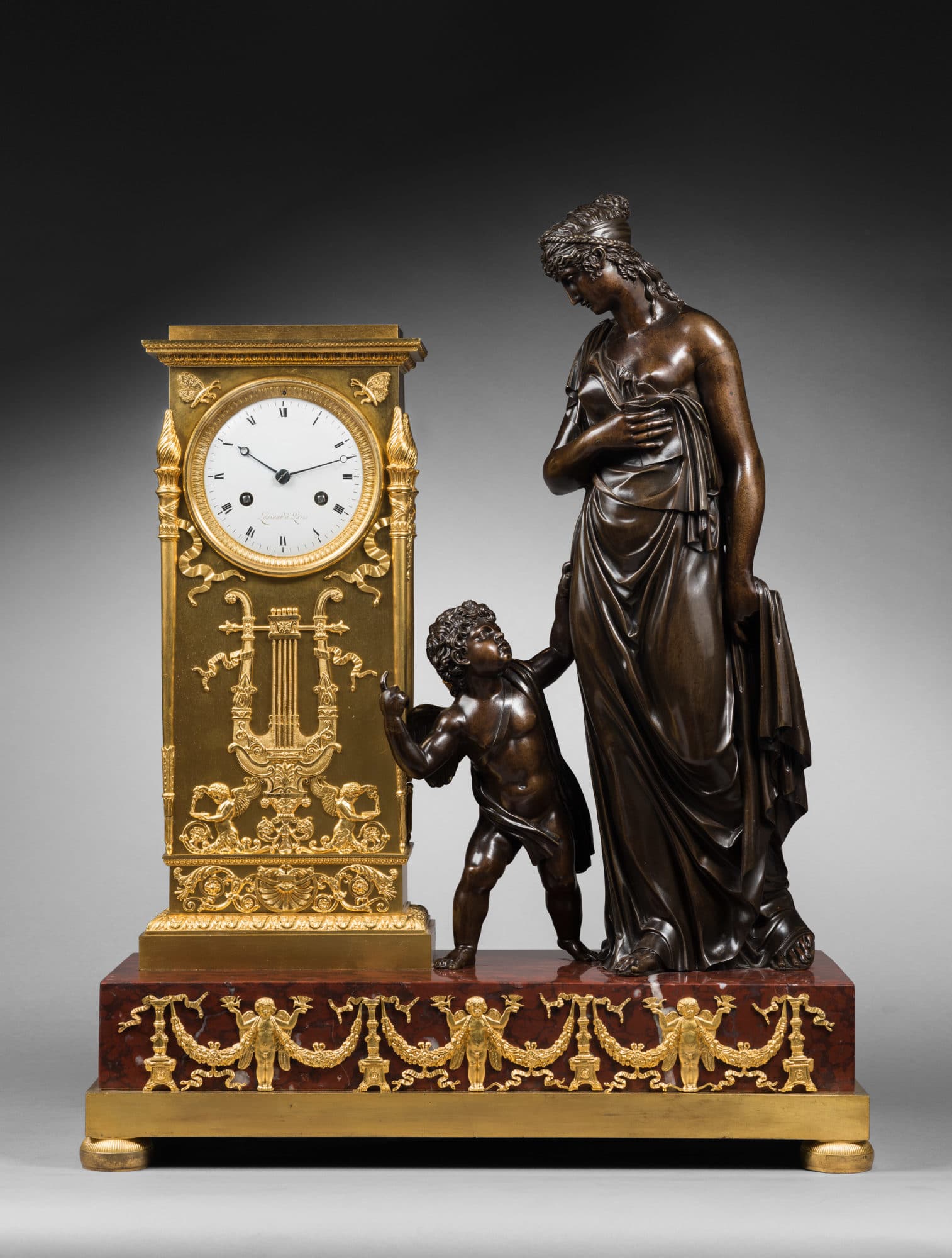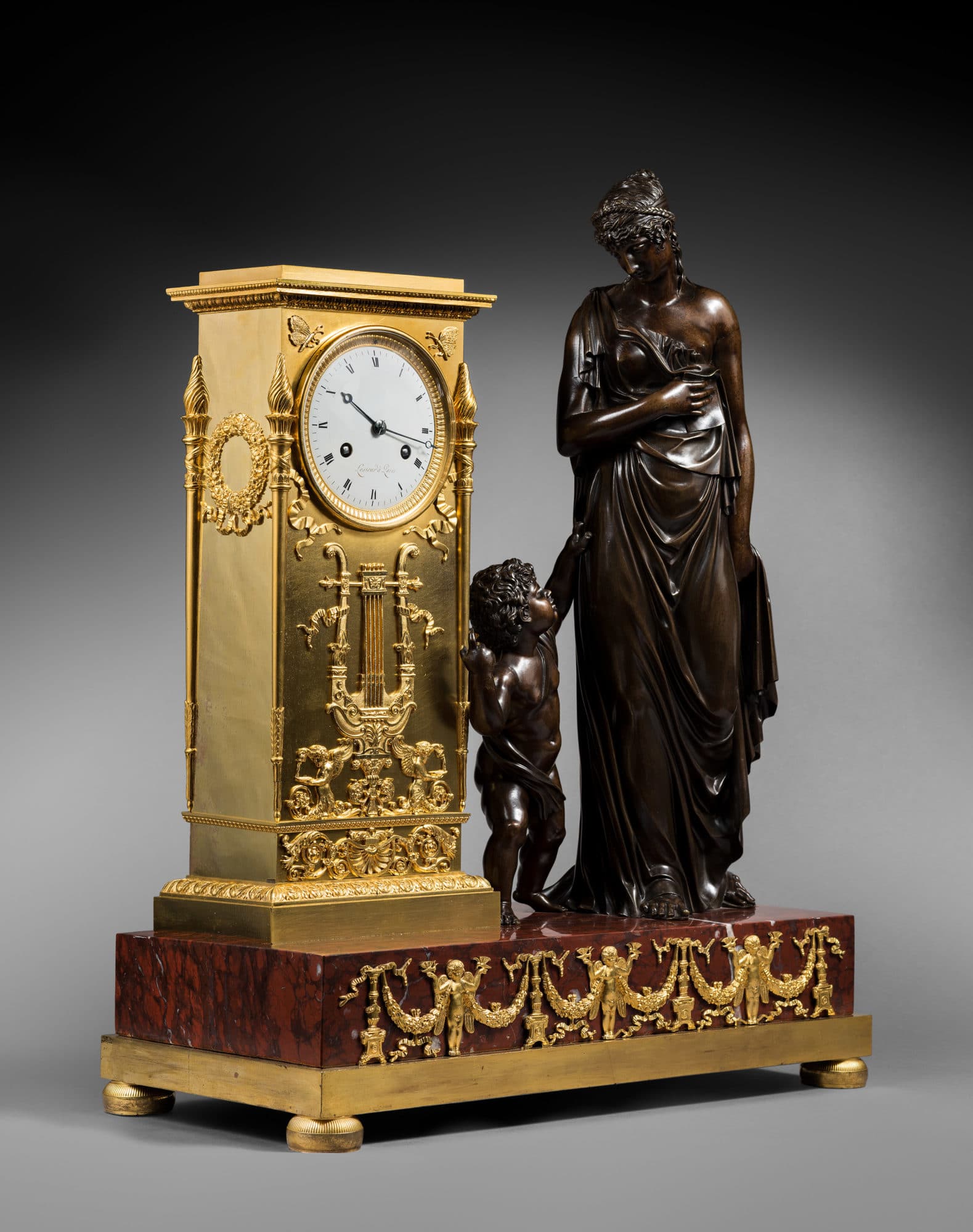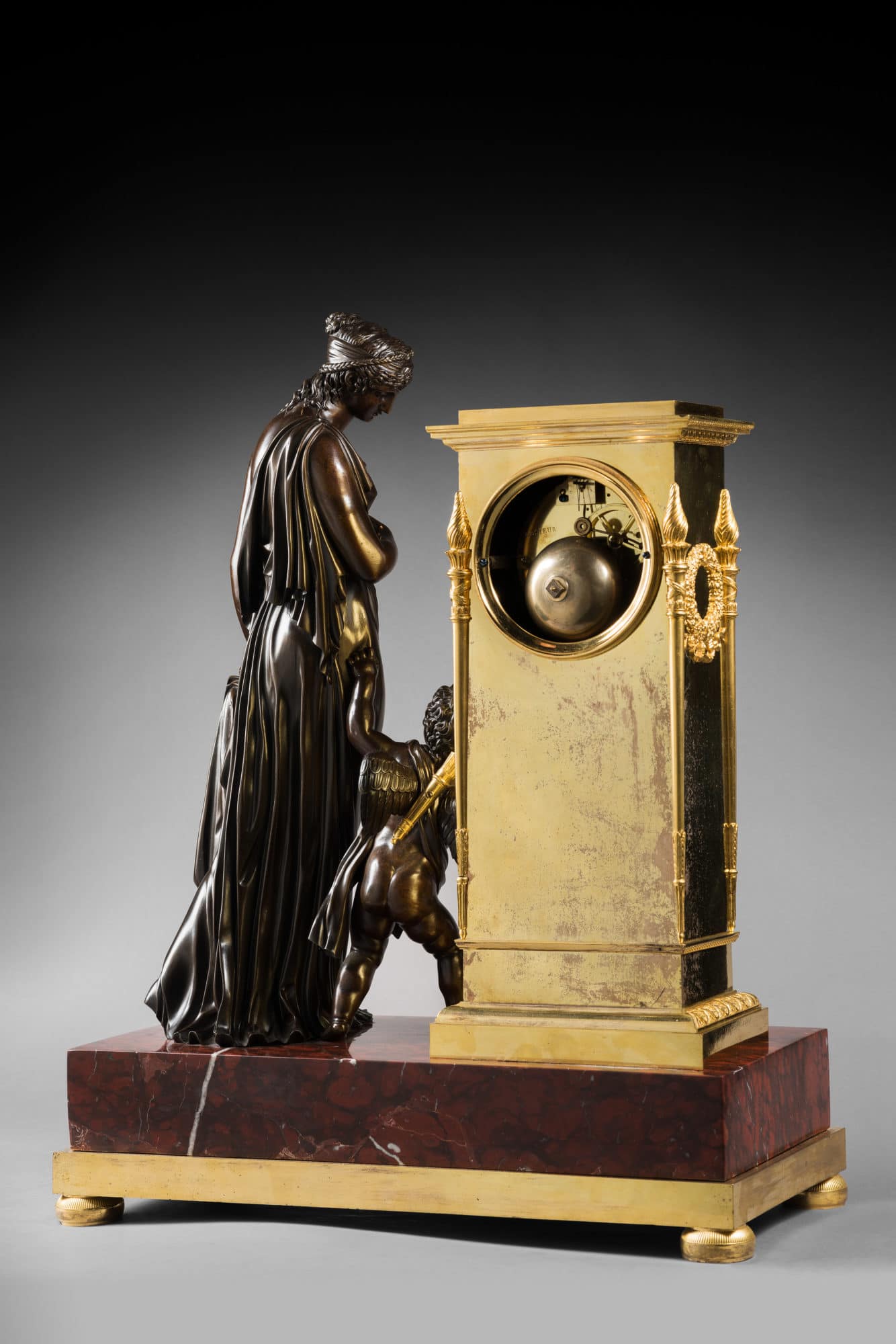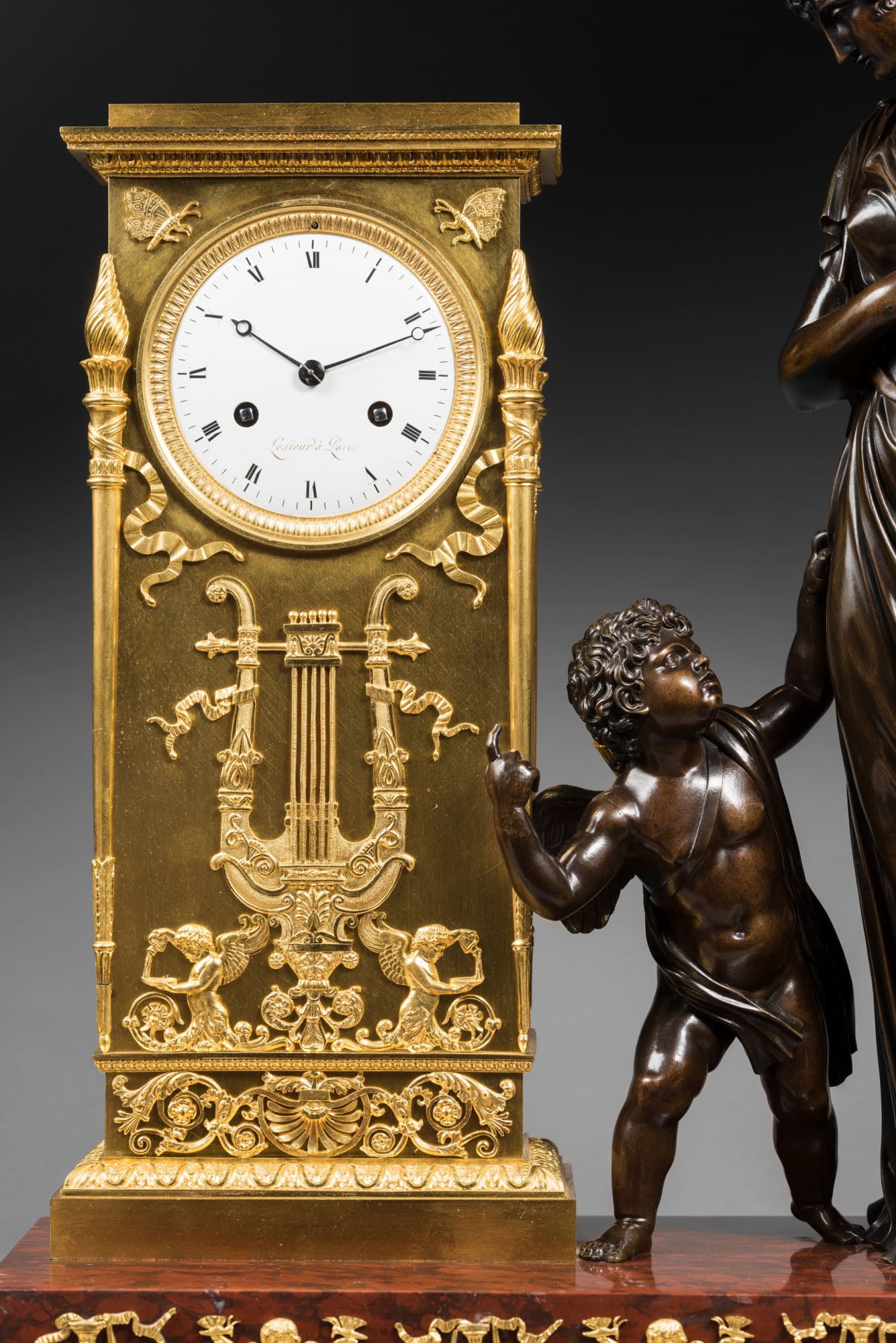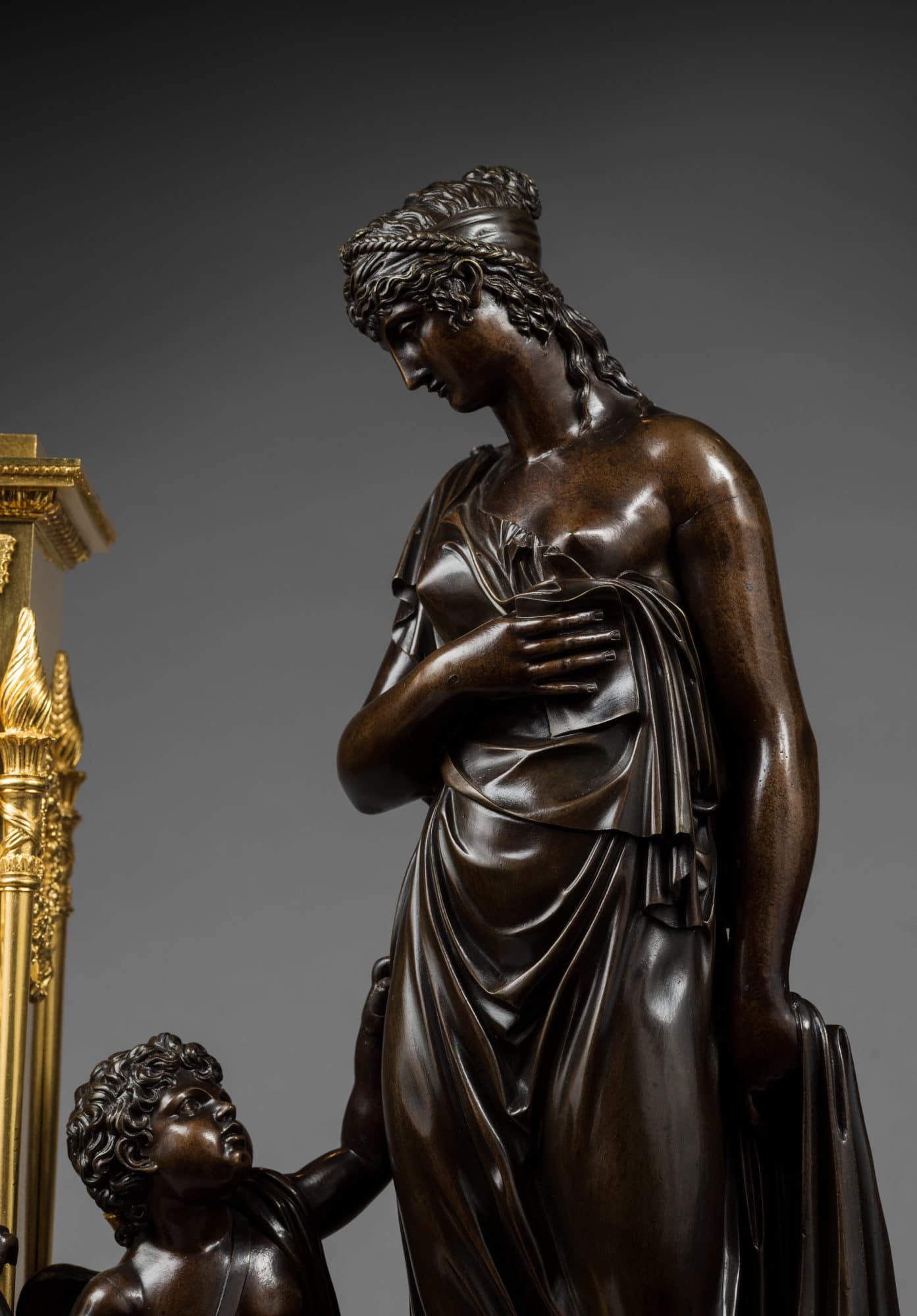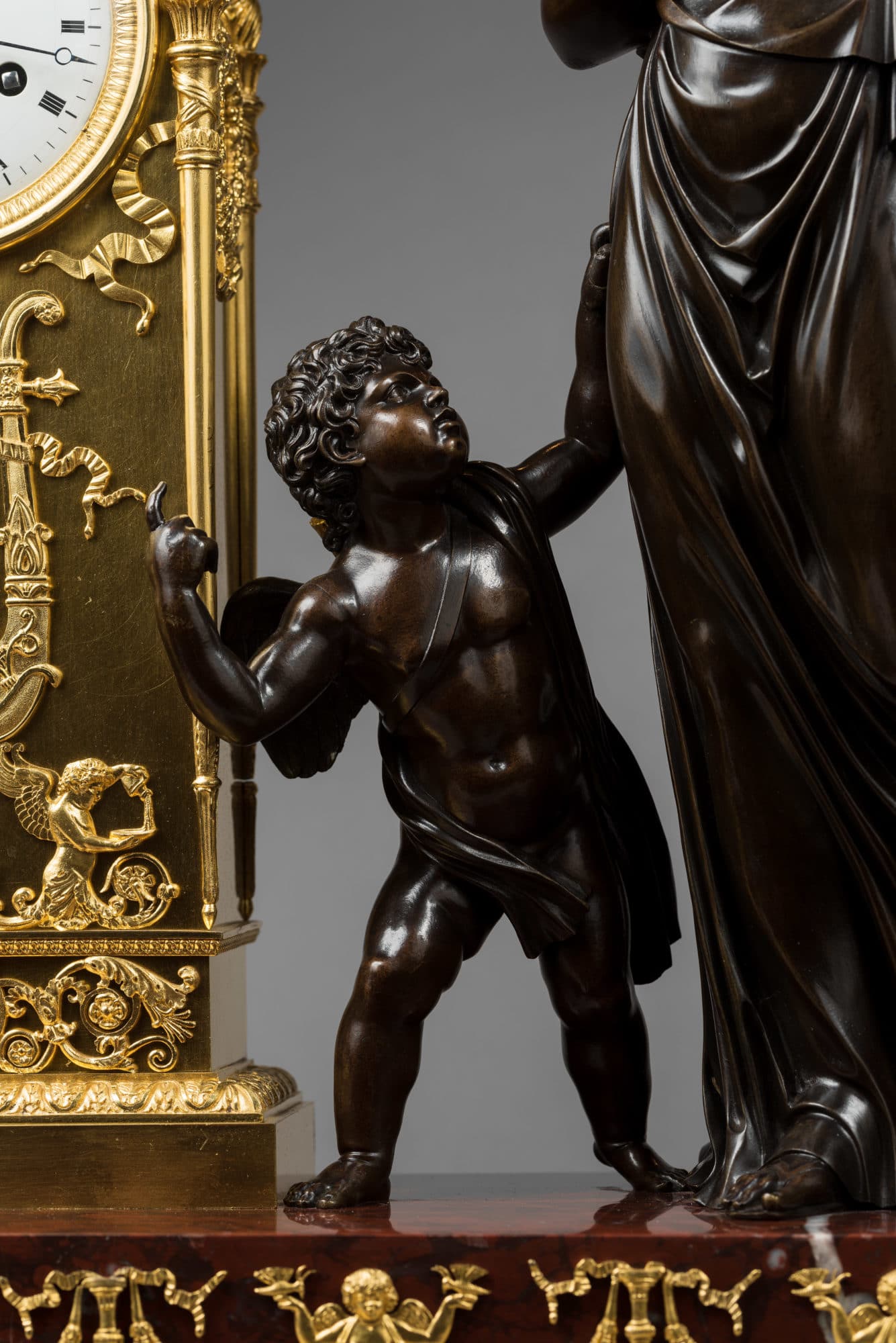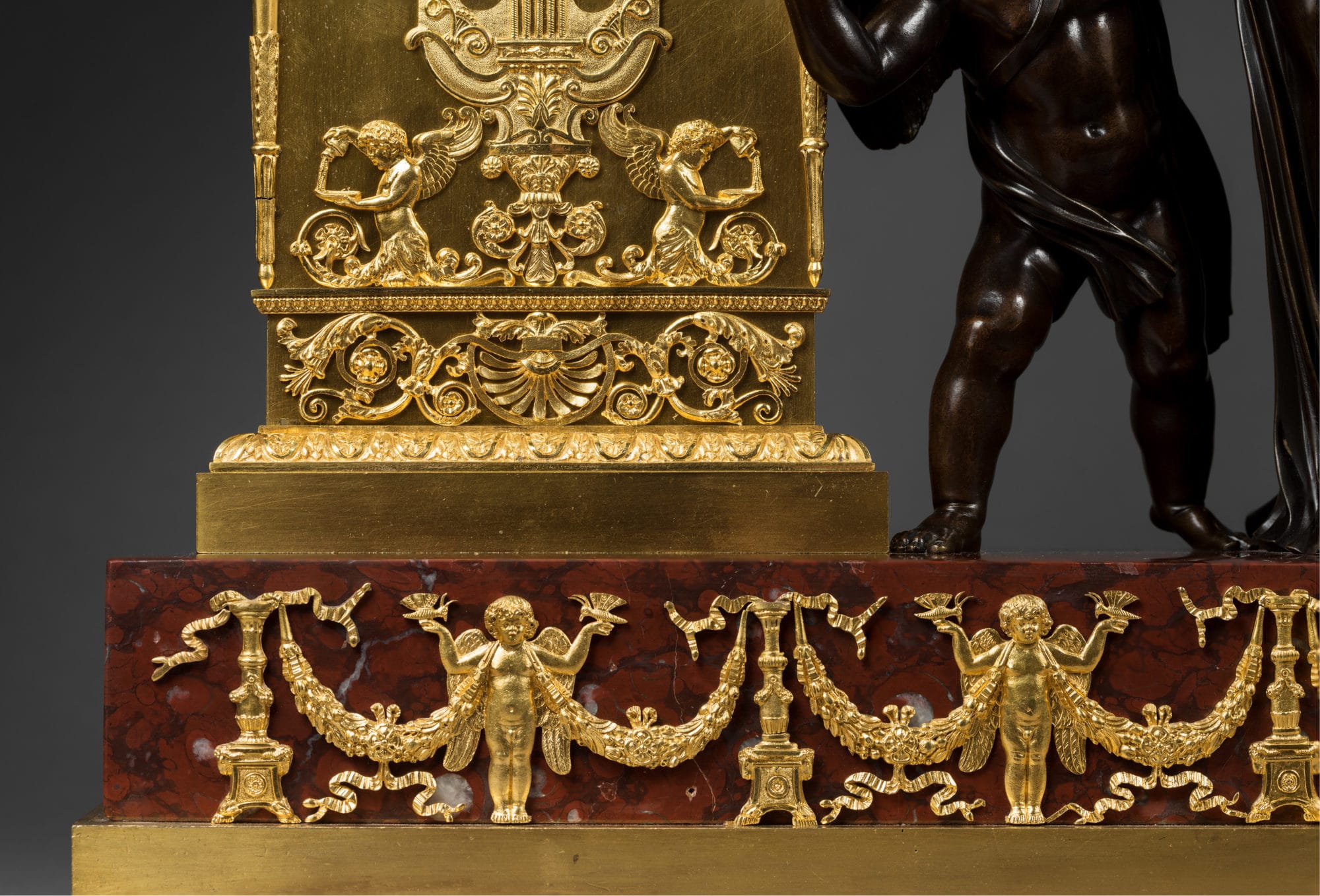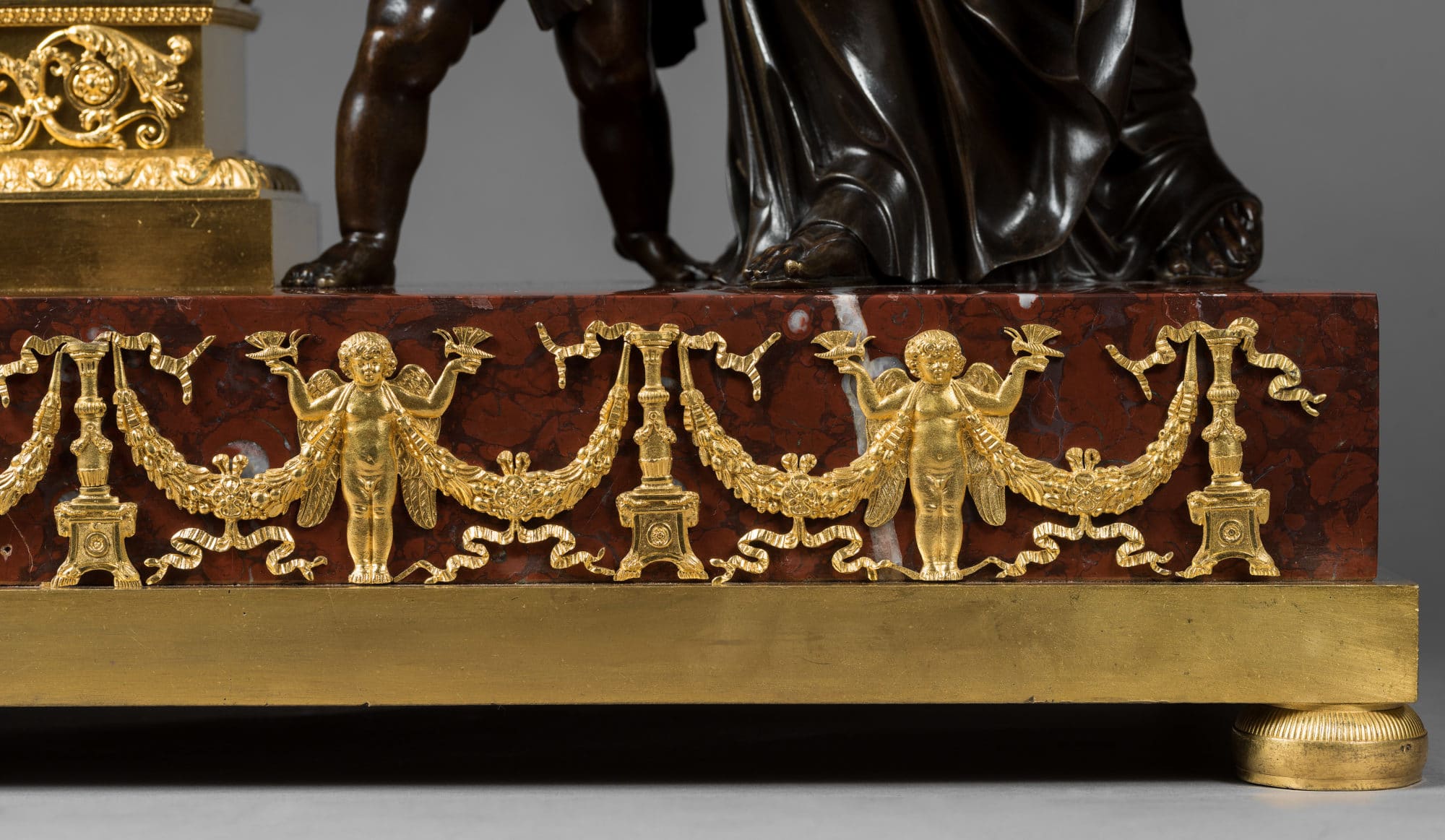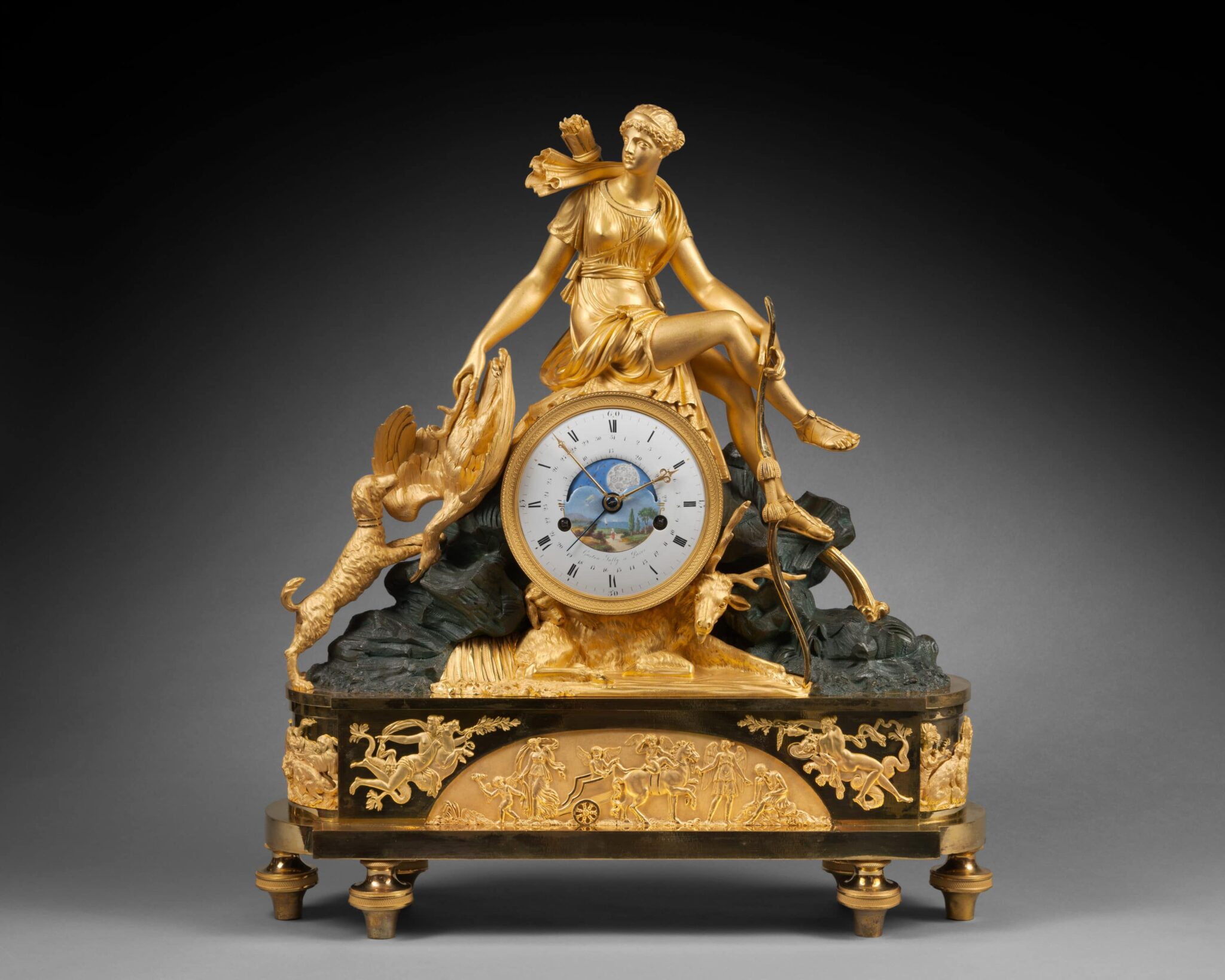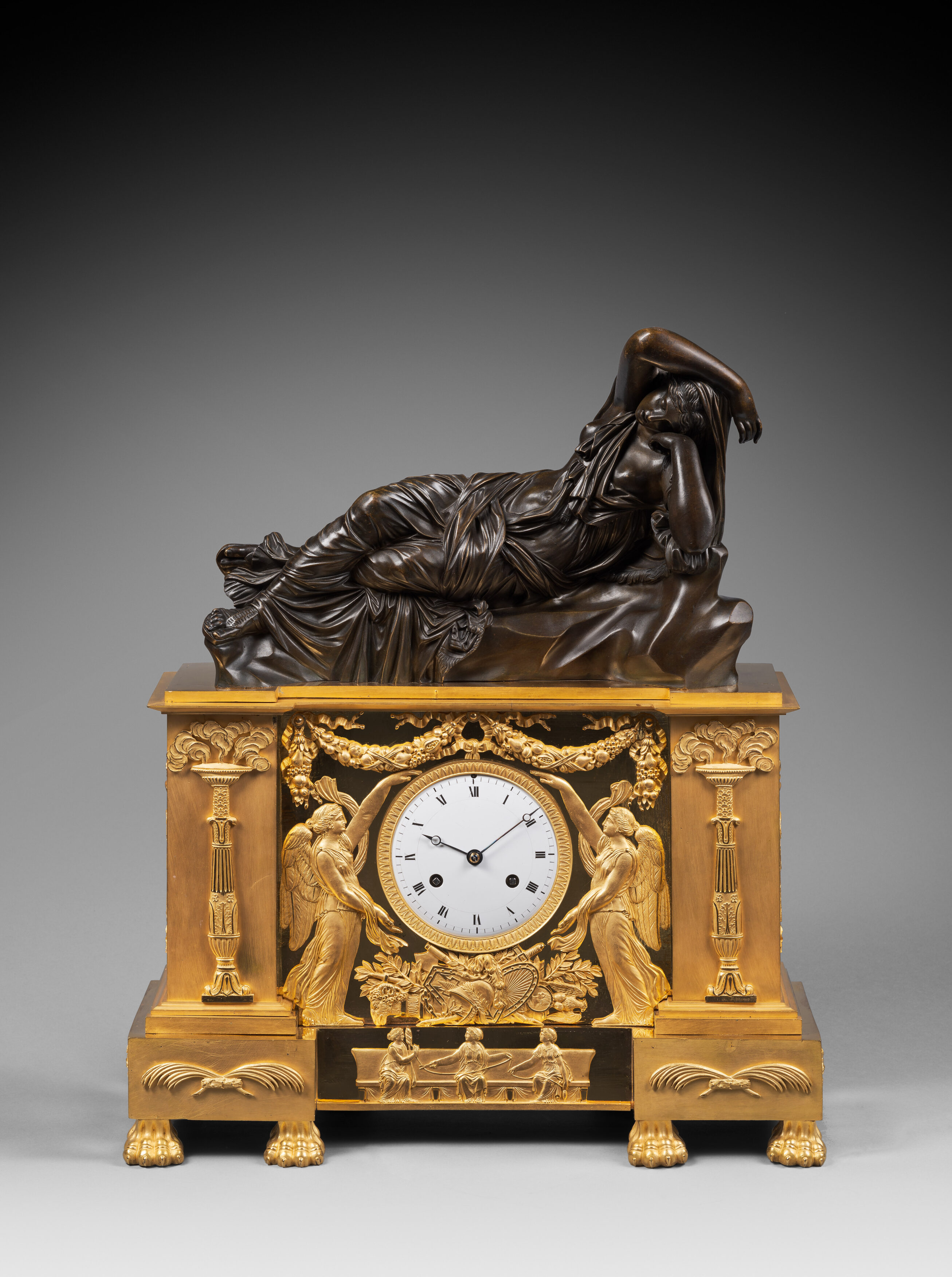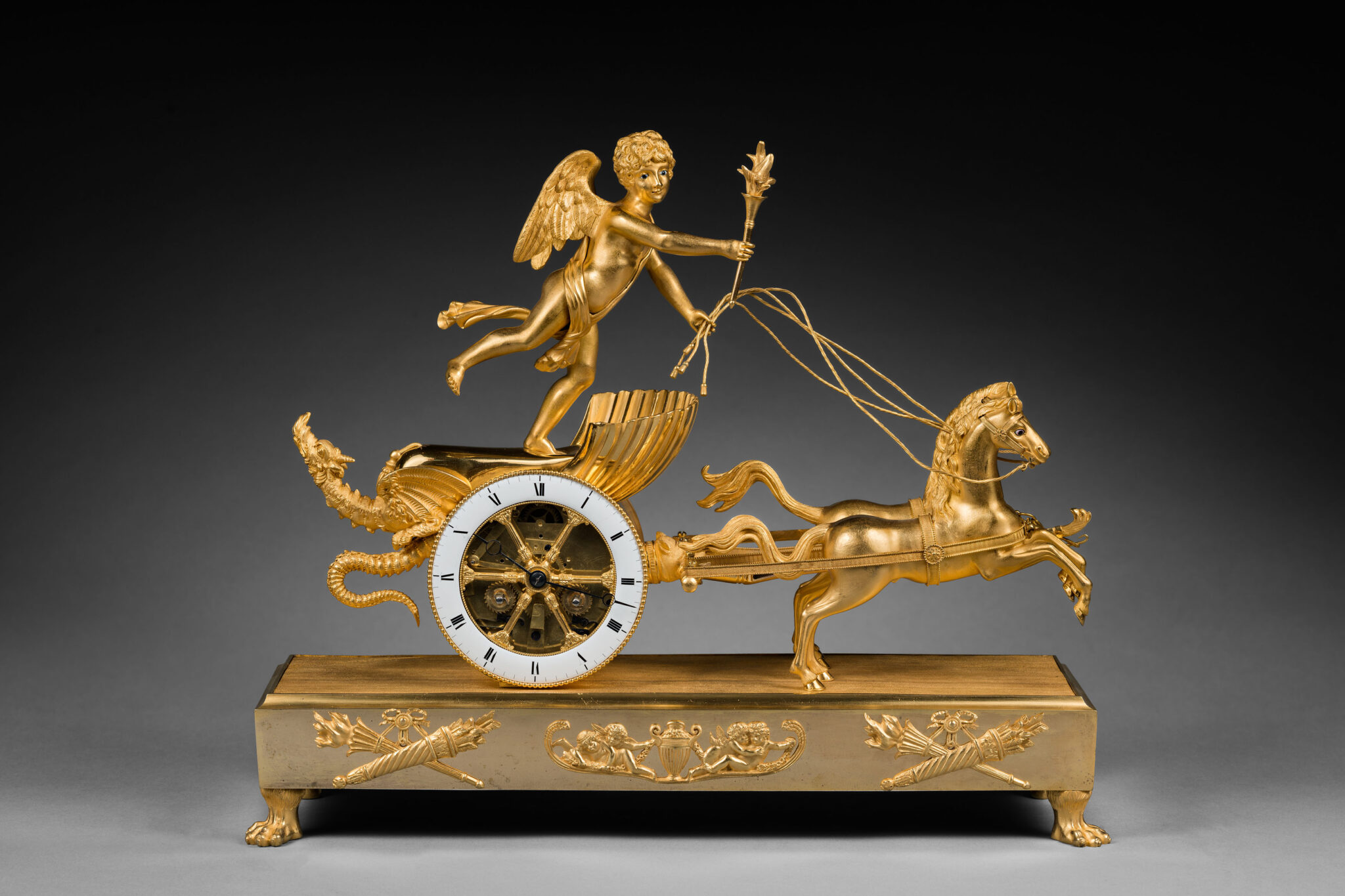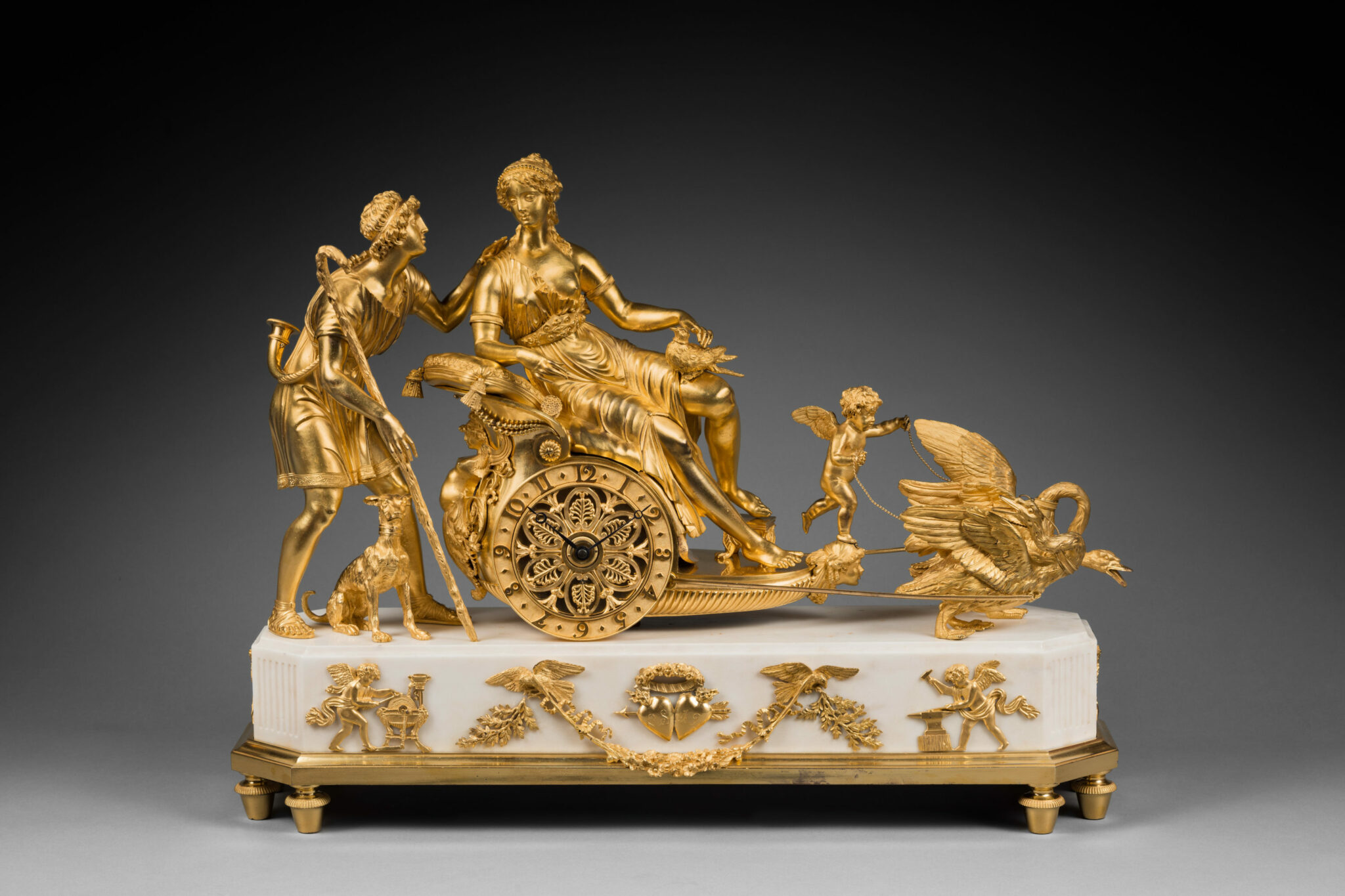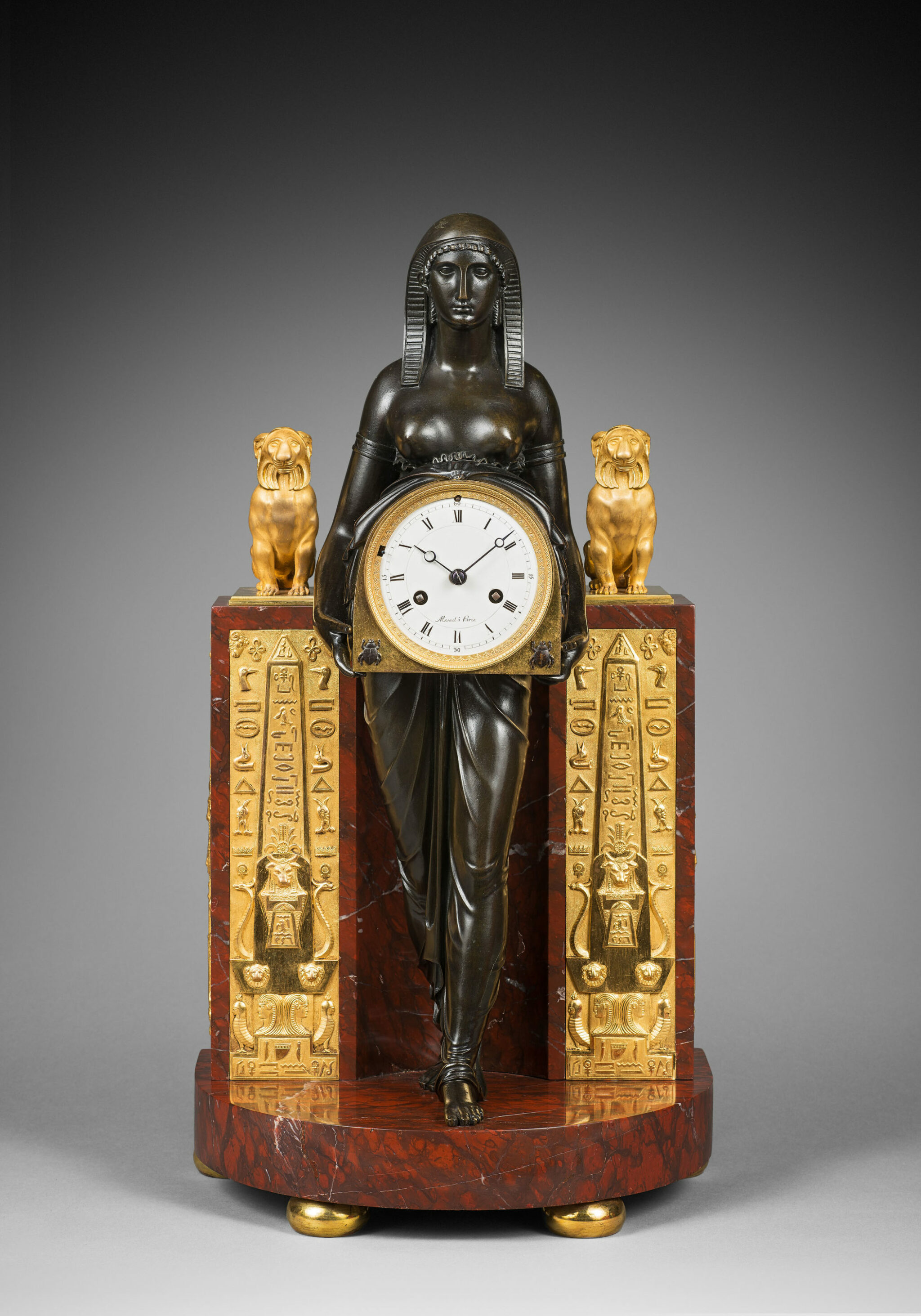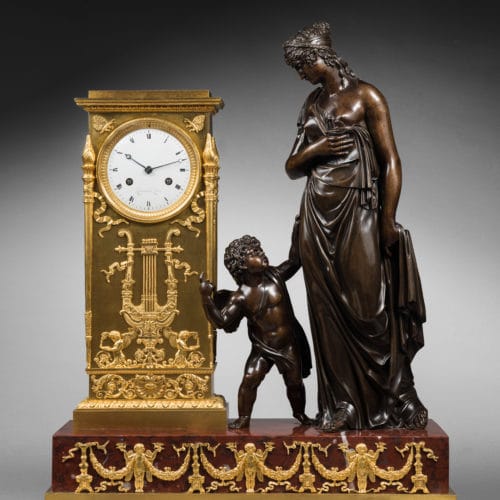Important Gilt and Patinated Bronze Mantel Clock
“Venus Guided by Love“
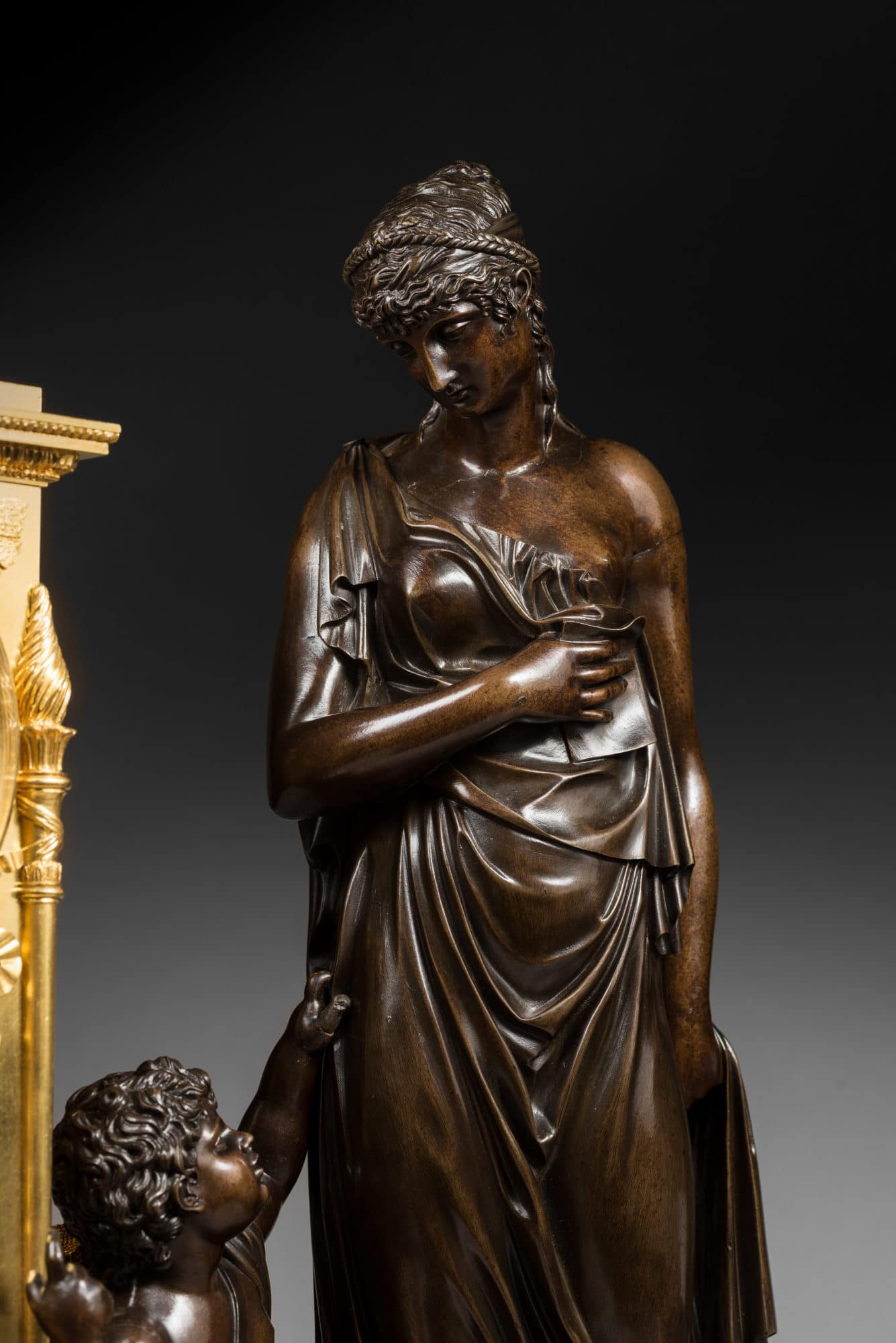
“Lesieur”
Case Attributed to Antoine-André Ravrio
Paris, Empire period, circa 1805-1810
The round enamel dial, signed “Lesieur à Paris”, indicates the Roman numeral hours and minute graduations. It is housed in a finely chased bronze altar whose pediment is decorated with egg and dart friezes, and beribboned torches on either side; the façade is adorned with applied stylised butterfly and lyre motifs. The sides feature beribboned flower wreaths, and the plinth a leaf frieze. On one side, there are two fine patinated bronze figures depicting a winged and semi-nude Cupid who is pointing to the time, while addressing Venus, who is clothed in antique robes and gazes lovingly at him. The rectangular Italian griotte marble base is decorated with a finely chased applied gilt bronze frieze composed of torches and winged putti holding butterflies, linked by beribboned flower and foliage garlands. The base, which rests on a gilt bronze plinth, is raised upon four flattened and gadrooned ball feet.
Discover our entire collection of antique mantel clocks for sale online or at the gallery.
La Pendulerie is the specialist in fine and rare antique clocks, based in Paris.
The unusual design of the present clock places it among the finest mythology-inspired clocks created in Paris in the early 19th century. It depicts a scene derived from classical mythology, in which Cupid is warning the goddess of love of time’s effect on her beauty.
Only a few identical models are known. They are generally much smaller in size, and often feature variations, particularly in the treatment of the base. One such clock appears to be in the Mobilier National in Paris (illustrated in E. Dumonthier, Les bronzes du Mobilier National, Pendules et Cartels, Paris, undated (circa 1911), plate 37, and in E. Niehüser, Die französische Bronzeuhr, Munich, 1997, p. 211, fig. 276); a second piece, perhaps the same as the preceding clock, and now in a private German collection, is shown in H. Ottomeyer and P. Pröschel, Vergoldete Bronzen, Munich, 1986, p. 366, fig. 5.13.2; a further clock, formerly in the collection of the Prince de la Moskowa, very likely Léon-Napoléon-Louis-Michel Ney, Prince de Moskowa (1870-1928) (sold in Paris by Me Lair-Dubreuil, Galerie Georges Petit, May 27-29, 1929, lot 56).
André-Antoine Ravrio (1759 - 1814)
Received master bronzier in 1777, Antoine-André Ravrio was one of the most important Parisian bronze-casters of the late 18th century and the First Empire. Main supplier to the Imperial Garde-meuble, Ravrio worked alongside Pierre-Philippe Thomire and Claude Galle on the refurbishment of the main residences of Emperor Napoleon and Empress Josephine, as well as supplying numerous bronze furnishings for the influential figures of the time, including a number of the Empire’s Marshals. Today, some of his work can be found in the collections of the Mobilier National in Paris, as well as in major international public and private collections.
